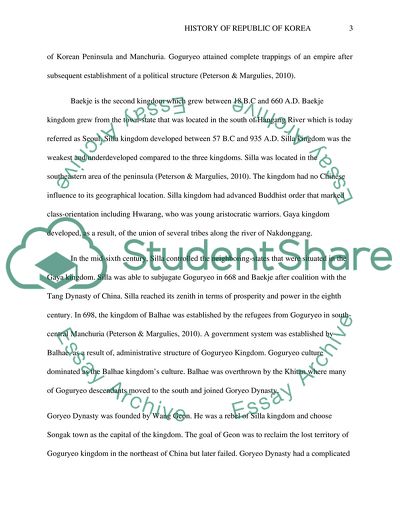Cite this document
(A Brief History of Korea Case Study Example | Topics and Well Written Essays - 1500 words, n.d.)
A Brief History of Korea Case Study Example | Topics and Well Written Essays - 1500 words. Retrieved from https://studentshare.org/history/1648998-history-of-republic-of-korea-and-its-affect-on-cultural-values-attitudes-beliefs
A Brief History of Korea Case Study Example | Topics and Well Written Essays - 1500 words. Retrieved from https://studentshare.org/history/1648998-history-of-republic-of-korea-and-its-affect-on-cultural-values-attitudes-beliefs
(A Brief History of Korea Case Study Example | Topics and Well Written Essays - 1500 Words)
A Brief History of Korea Case Study Example | Topics and Well Written Essays - 1500 Words. https://studentshare.org/history/1648998-history-of-republic-of-korea-and-its-affect-on-cultural-values-attitudes-beliefs.
A Brief History of Korea Case Study Example | Topics and Well Written Essays - 1500 Words. https://studentshare.org/history/1648998-history-of-republic-of-korea-and-its-affect-on-cultural-values-attitudes-beliefs.
“A Brief History of Korea Case Study Example | Topics and Well Written Essays - 1500 Words”, n.d. https://studentshare.org/history/1648998-history-of-republic-of-korea-and-its-affect-on-cultural-values-attitudes-beliefs.


